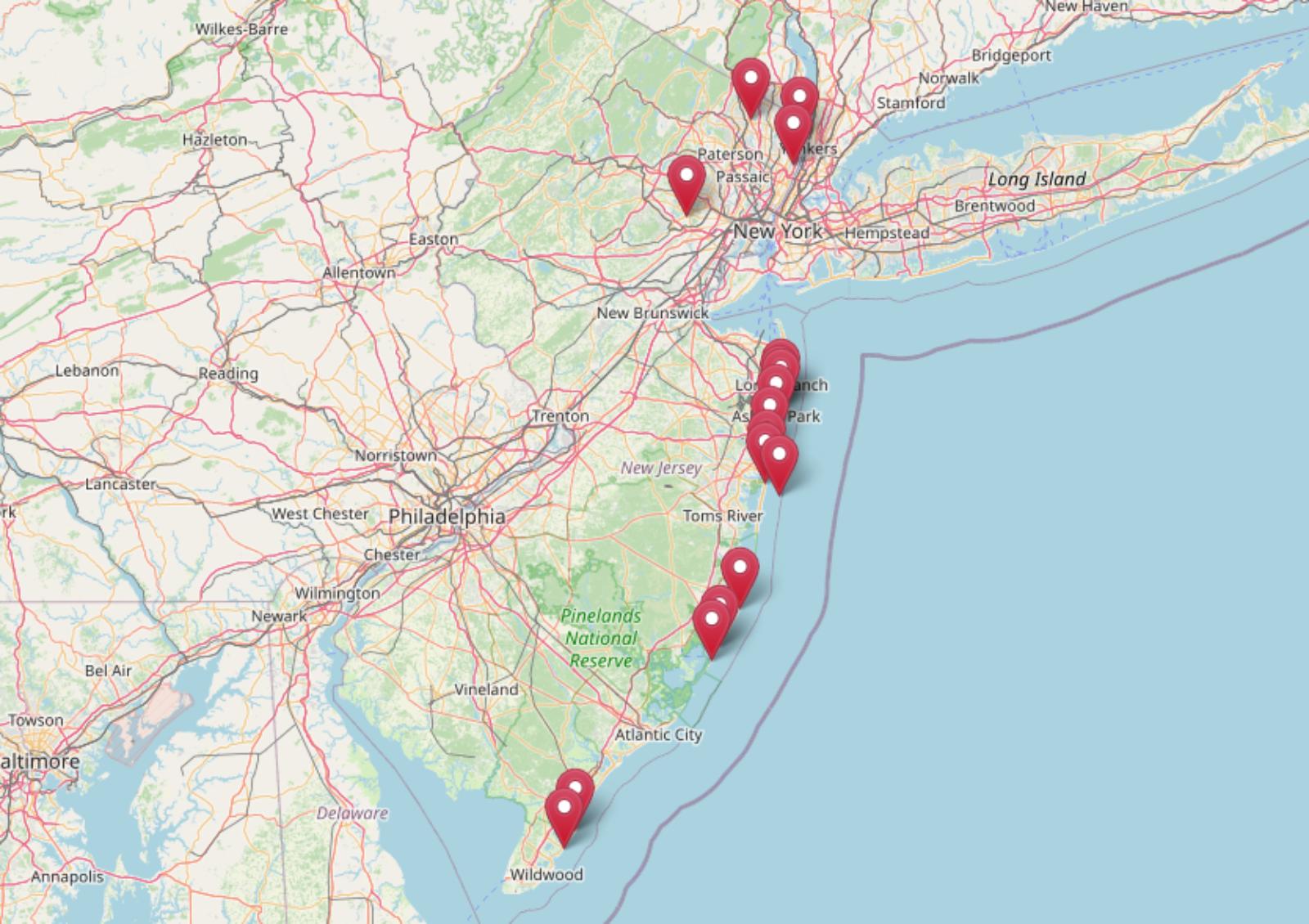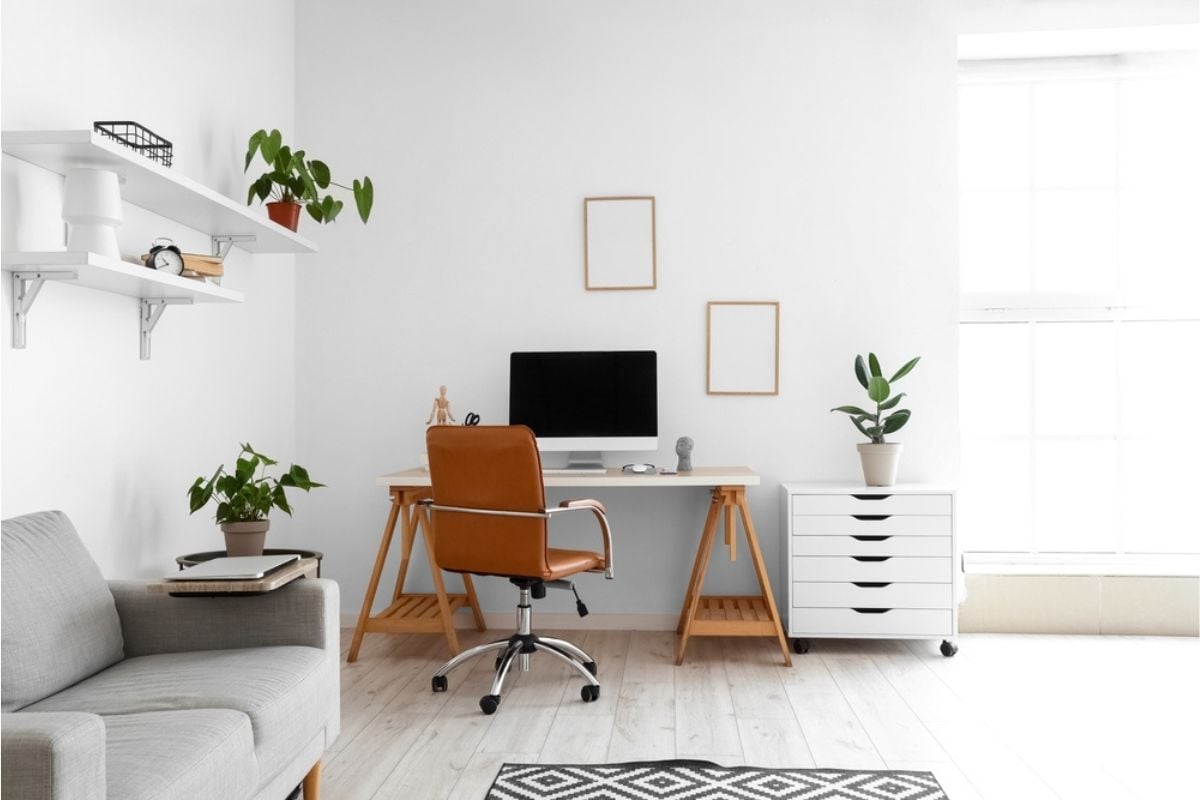
In 2025, buyers don’t just hope for a home office—they expect one that actually works. Thanks to hybrid schedules and always-on video calls, a “cute corner with a laptop” no longer cuts it; they’re looking for real privacy, ergonomic layouts, dependable connectivity, and lighting that flatters faces as much as floor plans.
The twist is that small mistakes—dated built-ins, cable chaos, harsh fluorescents, or a closet-turned-cubicle with no air—can make a room feel like a problem to solve rather than a perk to enjoy. And when a space reads “project,” buyers mentally subtract time and money from your asking price.
This guide spotlights the 28 home office missteps that quietly kill buyer interest—and shows what to do instead. We’ll keep it practical: sound control that doesn’t require construction, storage that hides the mess, lighting that layers instead of glares, and simple tech upgrades that make Zoom run smooth. If you’re staging to sell (or just want a work zone you love), tackle these fixes and turn your office from afterthought to advantage.
28. Permanent Holes and Wall Mounts

Buyers see wall scars and abandoned mounts as a to-do list they didn’t sign up for, not “character.” Visible anchors suggest heavy gear or odd layouts that won’t translate. Patching, sanding, priming, and repainting every damaged surface adds time and cost they mentally subtract from your price. Smooth walls photograph better, feel calmer, and signal a home that’s been maintained rather than hacked to fit a single person’s workflow.
27. Cheap Finishes Signal Cut Corners
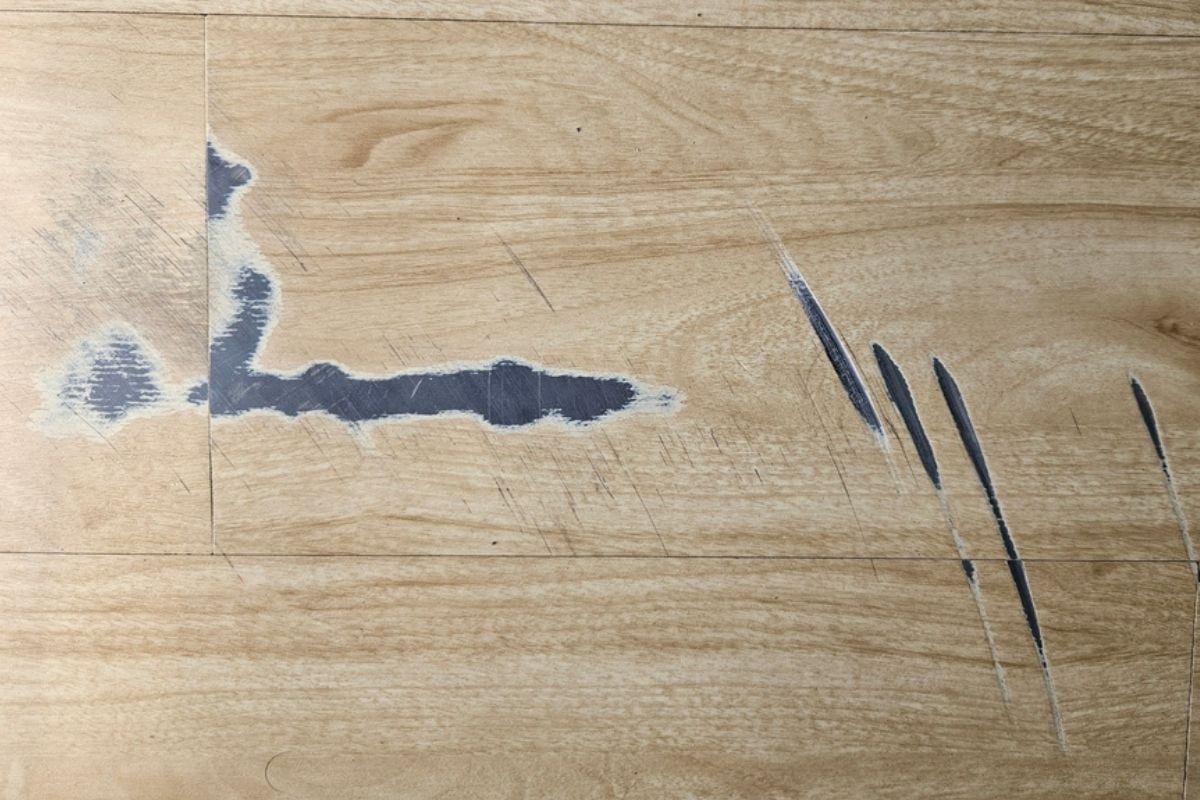
Peeling vinyl floors, hollow-core doors, and flimsy laminate desks scream “rental-grade,” which instantly lowers perceived quality. Buyers assume if the visible stuff is bargain-bin, the invisible stuff might be worse. Low-durability finishes also telegraph rapid wear in a high-use zone, which means replacements sooner than later. Quality hardware, durable surfaces, and clean lines quietly communicate care—and that’s bankable.
26. Messy Multi-Use: Gym Meets Office
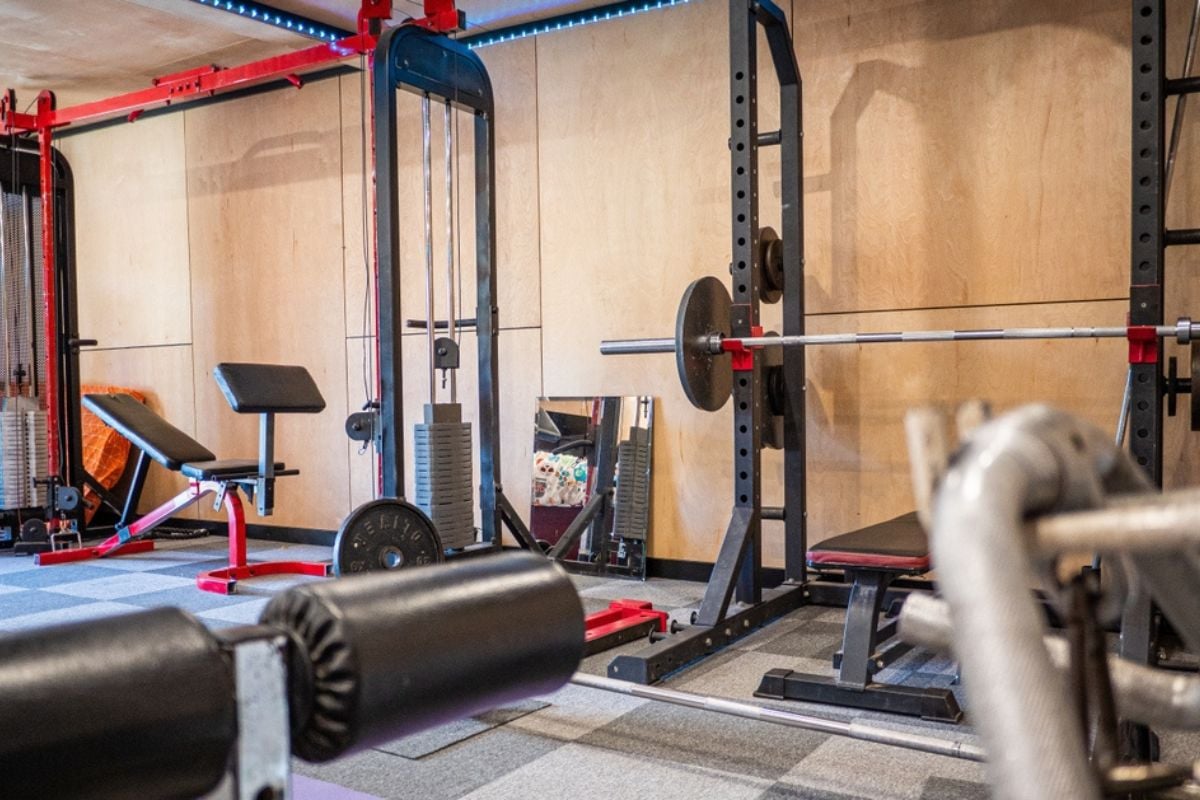
A treadmill beside the laptop reads as cramped and chaotic, not versatile. Blurred functions make rooms feel smaller because your eye can’t understand what the space is for. Buyers want a clear mental picture of how they’ll work there tomorrow, not dodge dumbbells. If space must flex, tuck the secondary use behind doors or in concealed storage so “office” stays the headline.
25. Awkward Webcam Backdrop to Bathroom

Nothing kills professional vibes faster than a toilet cameo during a Zoom. Buyers imagine embarrassing calls and rush to reconfigure, which equals hassle and cost. Poor sightlines also hint at a hasty layout with no thought to privacy or flow. Reorient the desk, add a door, or use screens so the camera frames light, art, and books—not plumbing.
24. Visible Tools or Surveillance Gear
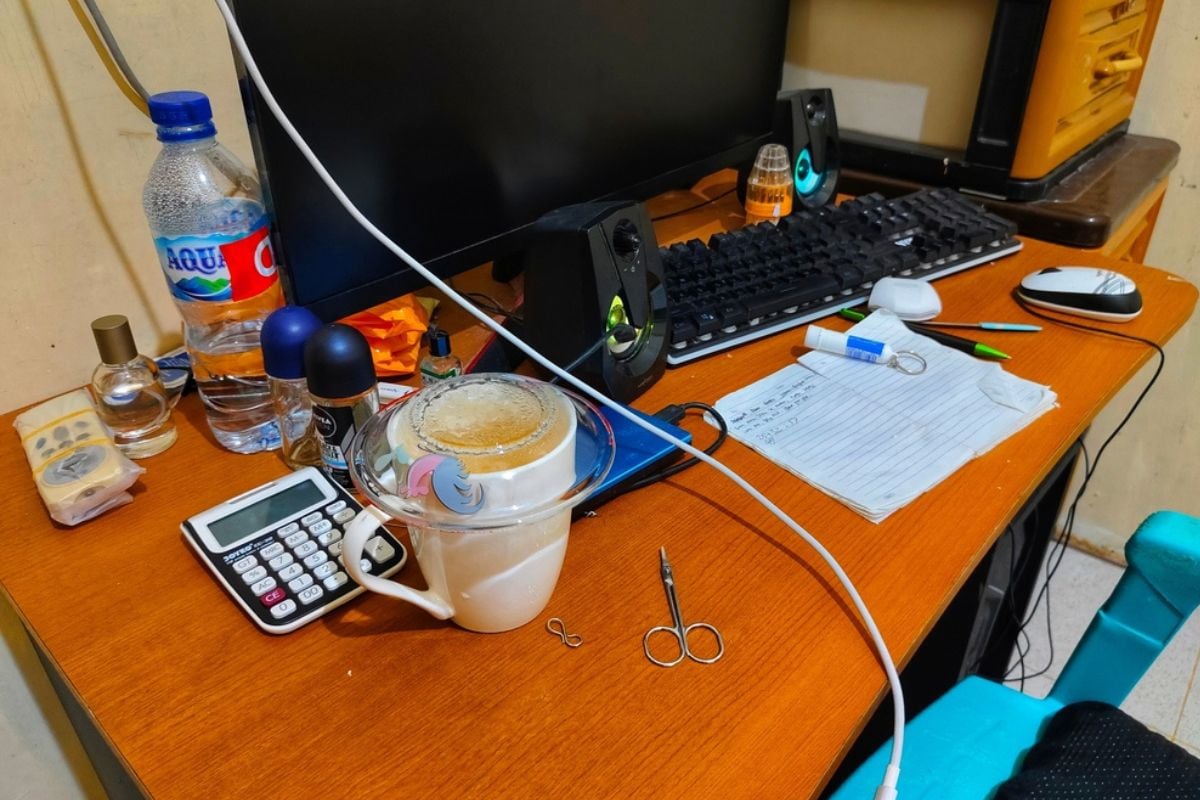
Workbench clutter, soldering irons, or security monitors make the room feel industrial and a bit unsettling. Buyers read specialized gear as “this space only works for that person’s niche.” It also raises questions about noise, smells, and safety that they don’t want in a home office. Pack away workshop items and keep tech discreet so the room feels universally productive.
23. Overloaded Power Strips Are Hazards
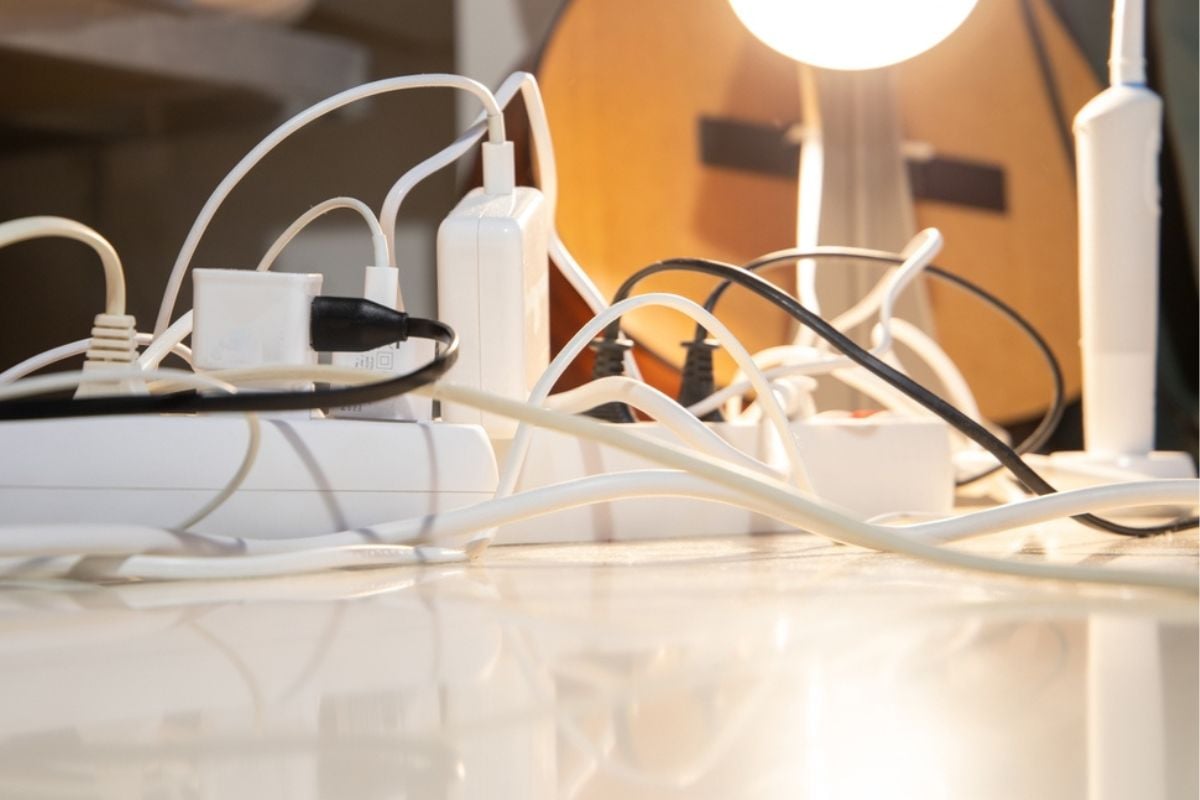
Daisy-chained strips and tangled adapters look like a fire risk because they can be. Buyers equate visible electrical shortcuts with bigger hidden problems. It also suggests too few outlets, which means hiring an electrician before they can even plug in. Add code-compliant receptacles, route cables cleanly, and consider a small UPS so the setup looks safe and smart.
22. Pet Damage and Chewed Cords
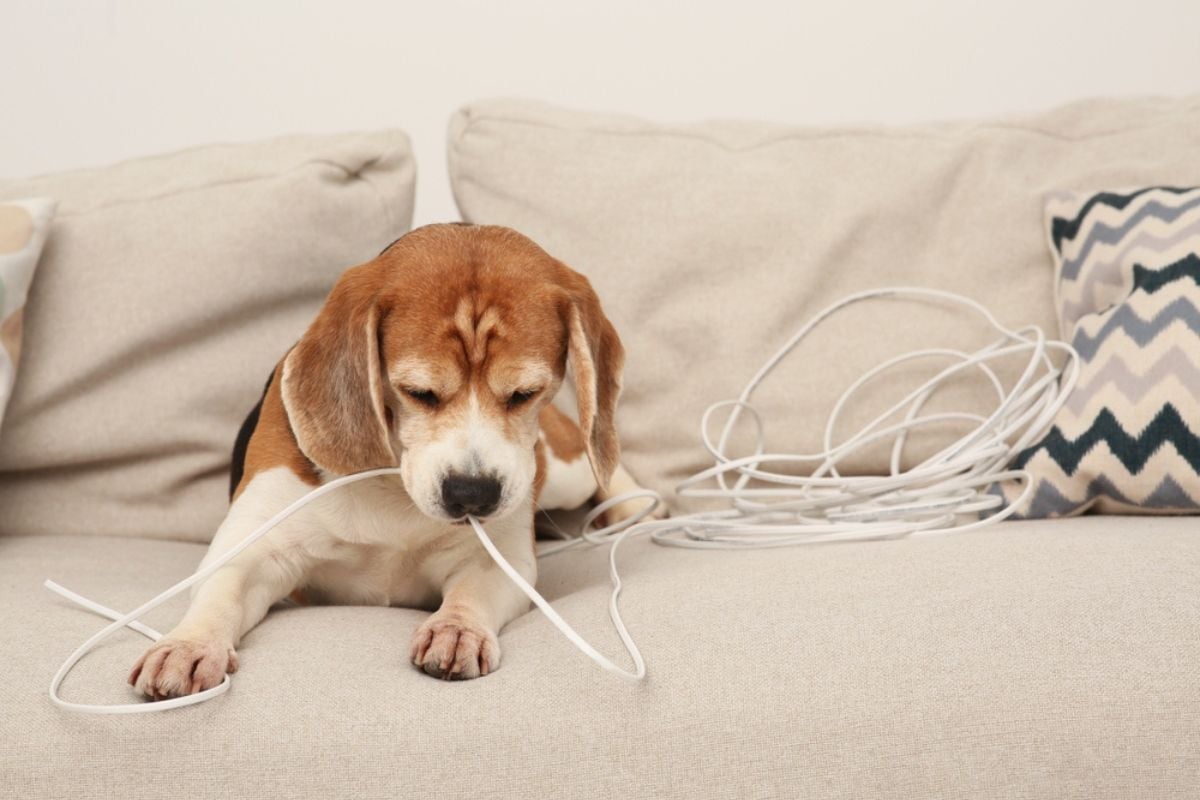
Scratched trim, frayed rugs, and bite-marked cables whisper “deferred maintenance.” Buyers start tallying repair bills and worry about lingering odors they can’t see. Damaged cords are a legitimate safety issue and make the office feel messy and stressful. Repair the surfaces, replace cables, and use cord covers and pet gates so the room reads cared-for, not chewed-through.
21. Lingering Smoke, Pet, or Cooking Odors
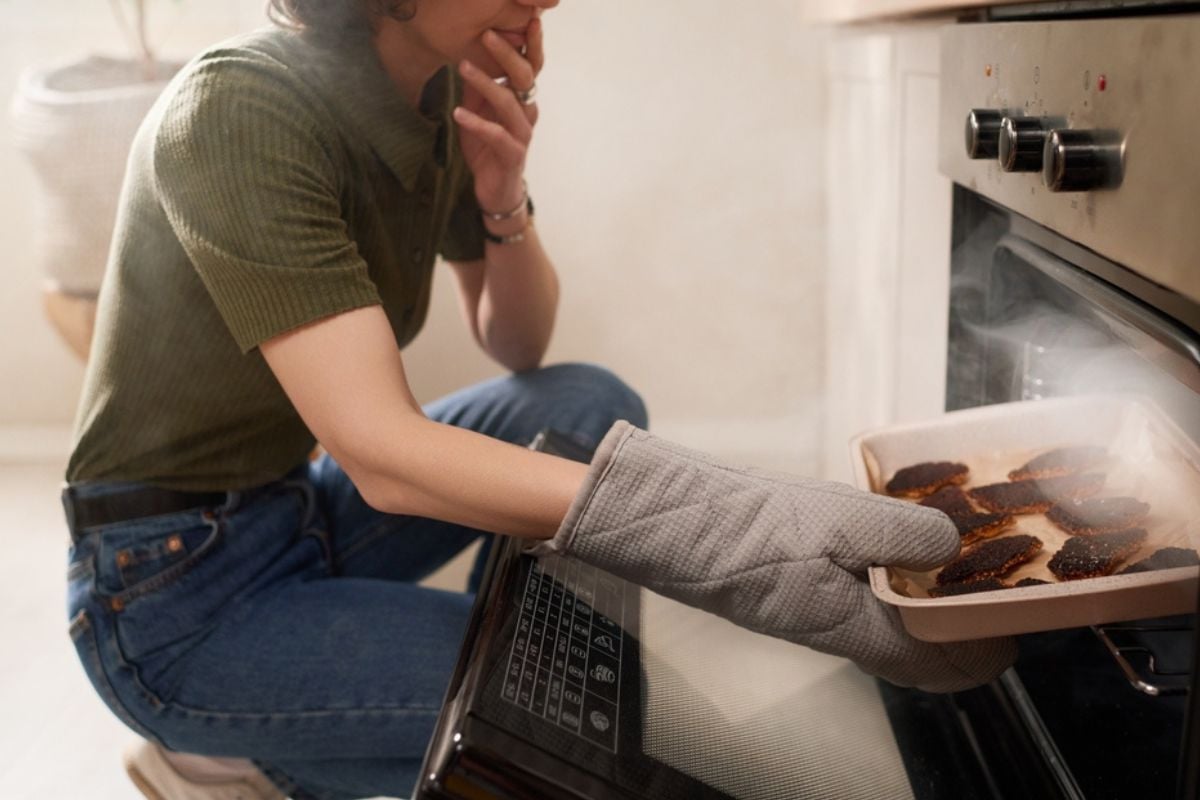
Bad smells sabotage even gorgeous rooms because scent is the first impression. Buyers imagine those odors fused into carpet pad, drapes, and HVAC ducts. That mental model translates to aggressive cleaning, replacements, and duct service before day one. Deep-clean textiles, change filters, and add neutral ventilation; then stage with fresh air, not heavy perfume.
20. Dark or Loud Polarizing Paint Colors

Neon green creativity caves and near-black walls crush light and narrow your buyer pool. Dramatic colors photograph poorly and make rooms feel smaller than they are. Most buyers want a calm focus zone they can personalize later, not repaint immediately. Modern, light-neutral walls with a soft contrast trim feel brighter, larger, and move-in ready.
19. Overly Personal or Themed Décor
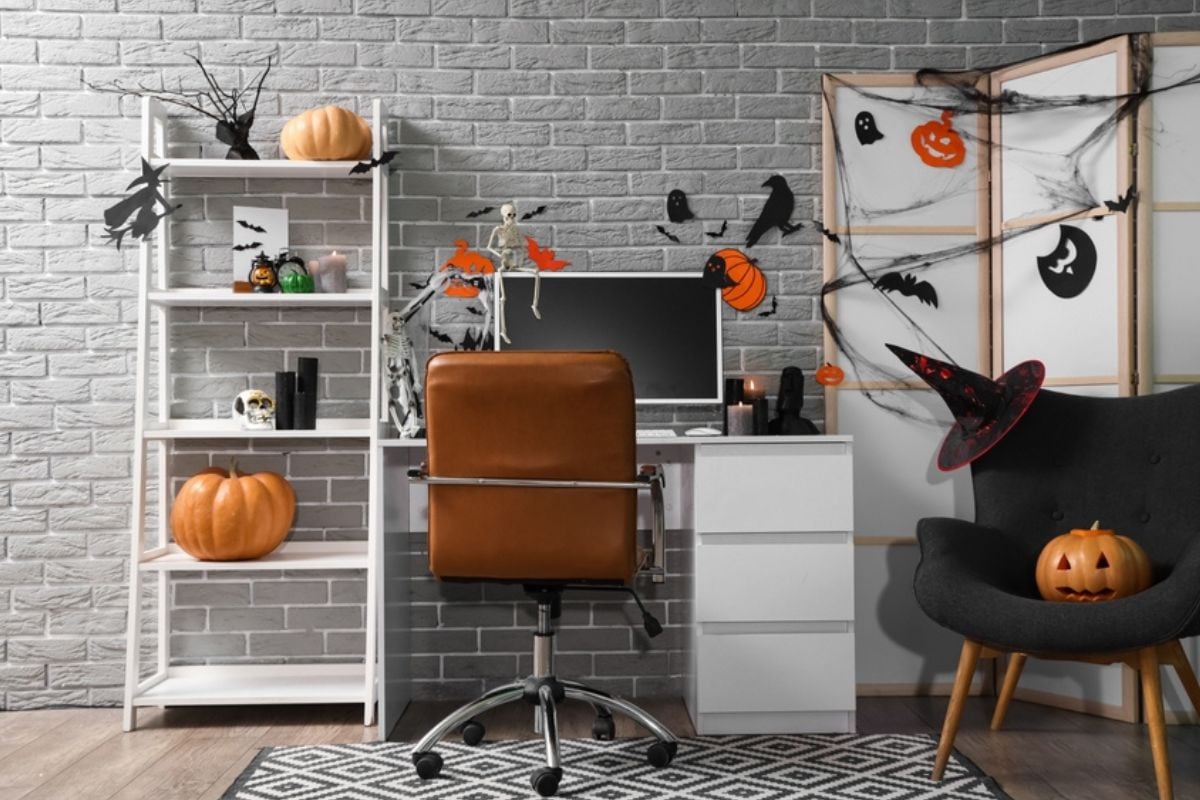
Sports shrine, comic-book murals, or hyper-minimalist manifesto—great for you, risky for resale. Personal themes hijack the buyer’s imagination and make the room feel “taken.” Bold collections also read as clutter on camera and in listing photos. Neutral art, greenery, and texture let buyers project their brand of productivity onto the space instantly.
18. No Storage, Paper Piles Everywhere

Stacks of files, loose peripherals, and overflowing inbox trays scream disorder. Buyers translate visual chaos into daily stress and assume the room won’t keep up with real workloads. It also signals a lack of planning—where do supplies, printers, and backup drives live? Add closed storage, a file drawer, and a hidden printer cabinet so surfaces stay clear and minds follow.
17. Oversized Furniture That Shrinks Space
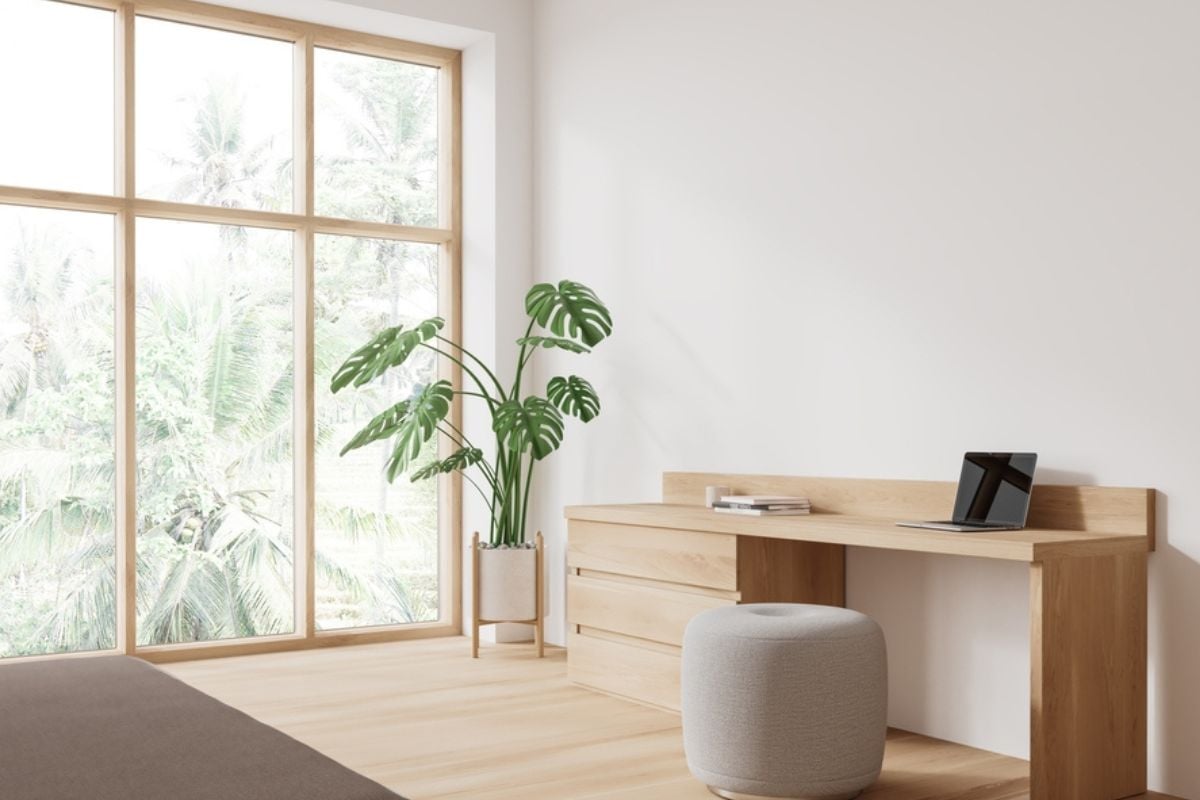
A massive executive desk and bulky chair can swallow a small room whole. When furniture breaches walking paths, buyers assume the office is too tight to function. Scale matters: a 48–60 inch desk and a slimmer task chair preserve movement and light. Right-sized pieces make the room feel bigger, brighter, and far more useful.
16. Dated, Overbearing Built-In Desk Units
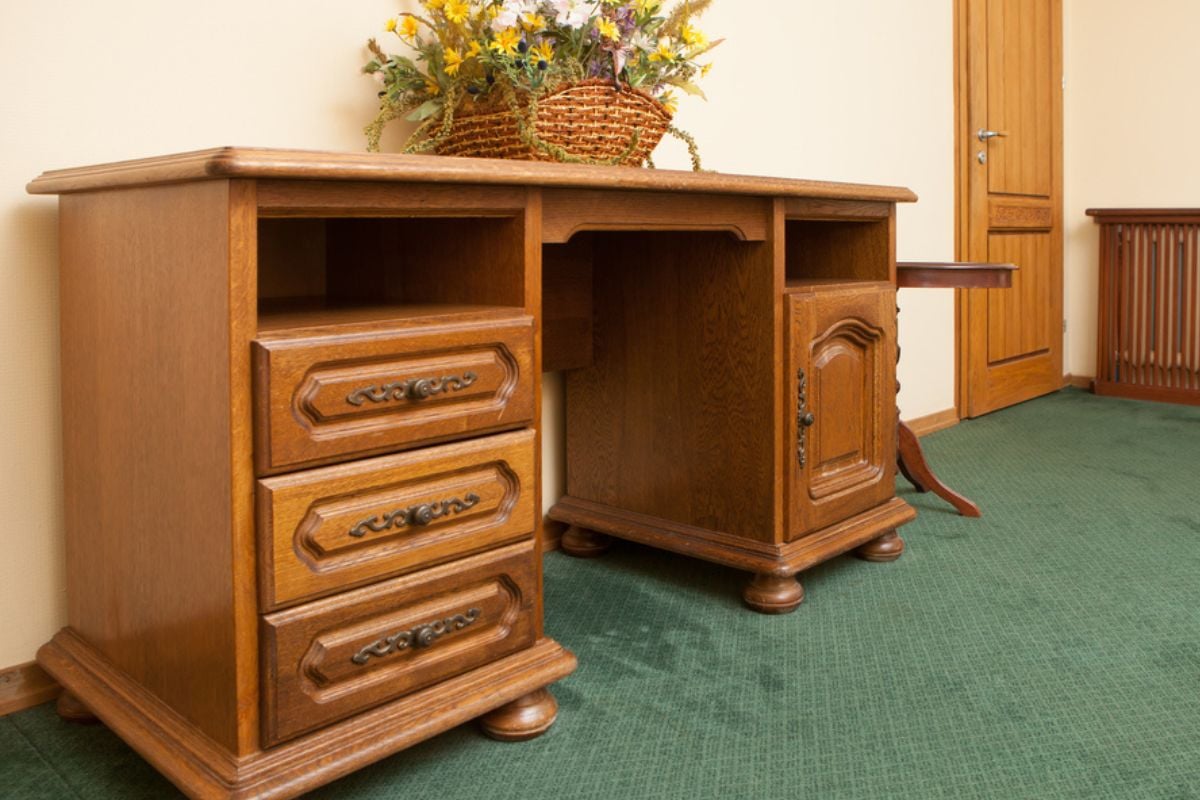
Heavy, orange-oak cabinetry with hutches belongs to another era—and buyers know it. Overbuilt millwork locks the layout in place and crowds the walls. It also implies an expensive tear-out before they can modernize. Replace with sleek shelving, a floating desk, and plug-ready walls to deliver flexibility without the bulk.
15. Echoey Floors or Stained Carpets
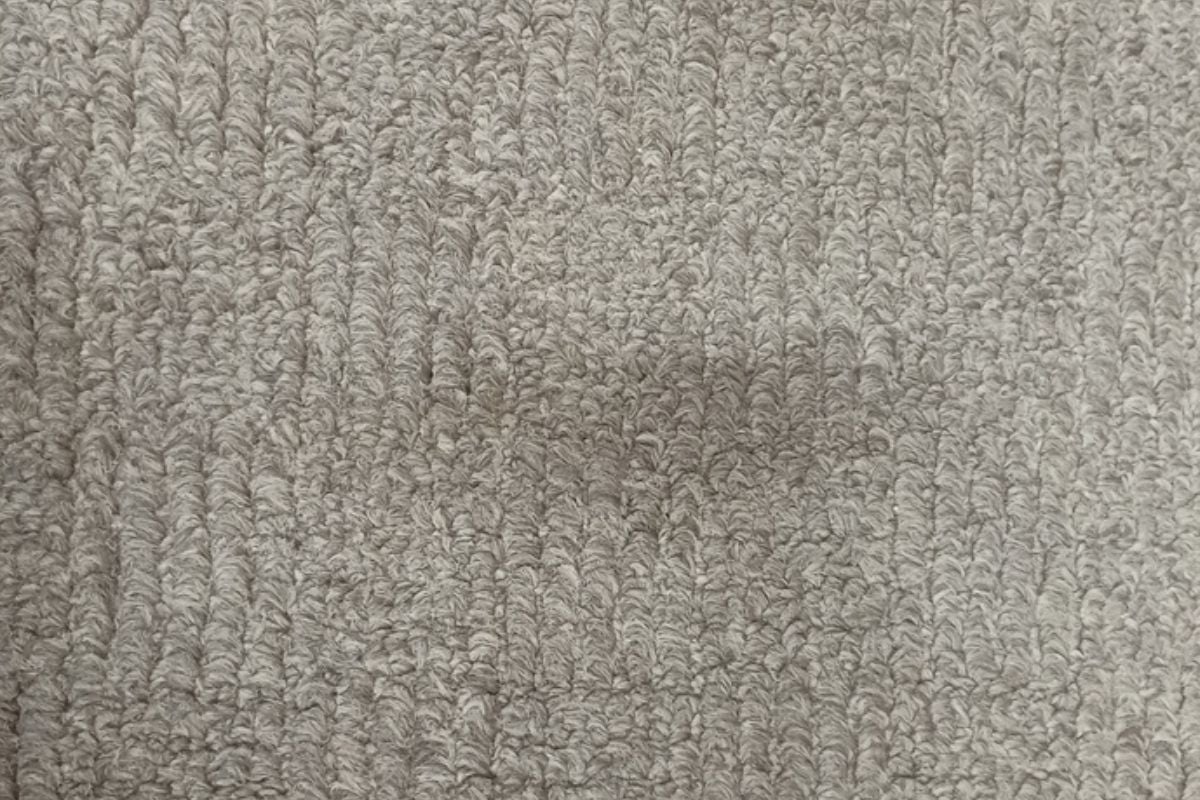
Hard echo makes calls sound cheap and fatiguing, while stained carpet screams “deep clean me.” Buyers anticipate acoustic fixes and replacement costs right away. Soft rugs, curtains, and a few acoustic panels tame echo and look intentional. Clean, quiet floors elevate both the sound and the perceived value of the entire space.
14. No HVAC: Hot or Cold Room
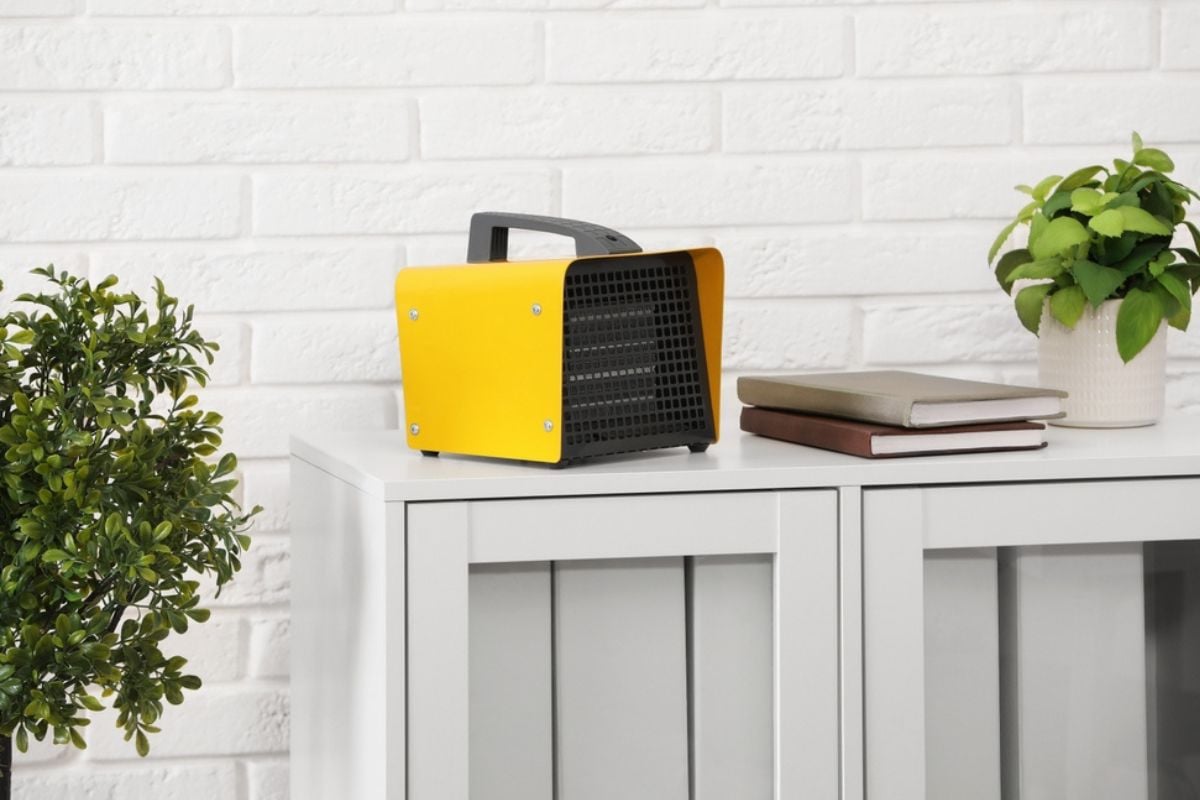
Temperature swings kill productivity and buyer enthusiasm in one shot. A room that bakes in summer and freezes in winter reads “bonus space,” not real square footage. Portable heaters and fans look temporary and unsafe. Extend ducts, add a mini-split, or install a smart register booster so comfort is built-in, not improvised.
13. Weak Wi-Fi or Spotty Cell Signal

Buffering during video calls is an instant deal killer. Buyers equate bad connectivity with daily friction they can’t design their way out of. Mesh Wi-Fi, a hardwired Ethernet drop, and a signal-friendly layout solve most issues. Make the speed test your friend so the office proves it’s a true workhorse.
12. Too Few Outlets or Ethernet
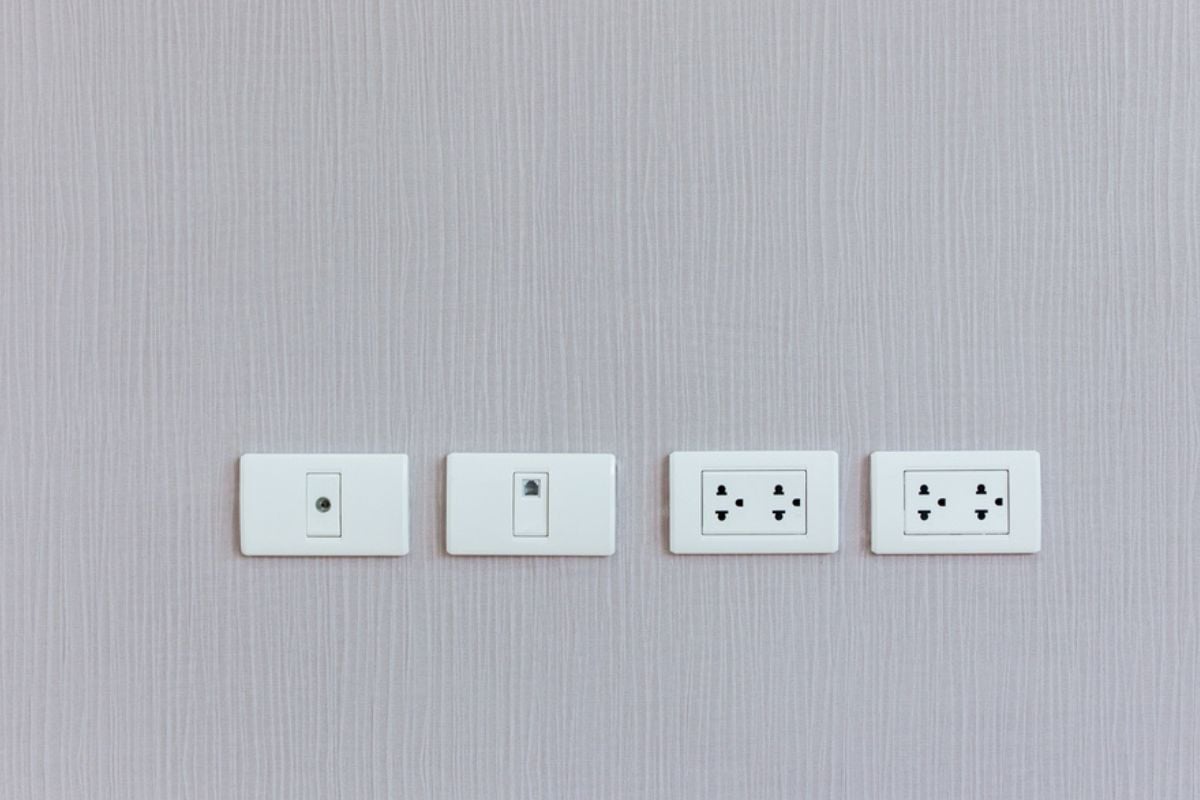
When laptops, monitors, lamps, and chargers fight over two outlets, buyers see a wiring project. Surface raceways and power strips feel like band-aids, not solutions. A couple of extra tamper-resistant receptacles and a discreet Ethernet jack transform usability. Future-ready infrastructure reads as thoughtful and adds quiet confidence to the room.
11. Cable Spaghetti and Exposed Wiring
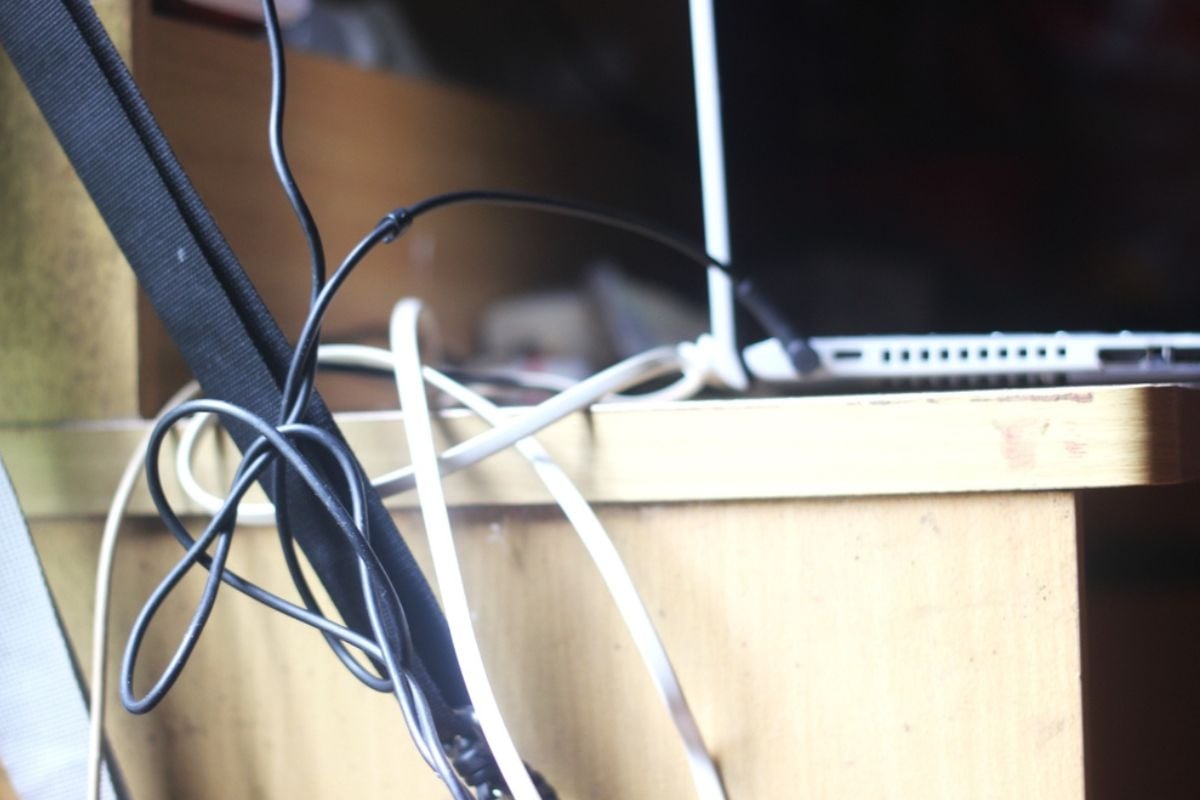
Nothing dates a space faster than dangling cords and knotted cables. Buyers assume dust, tripping, and ongoing frustration live there. Simple fixes—cord sleeves, under-desk trays, grommets, and cable clips—make gear disappear. Clean lines and clear floors let the architecture, not the adapters, take the spotlight.
10. No Window Treatments or Privacy
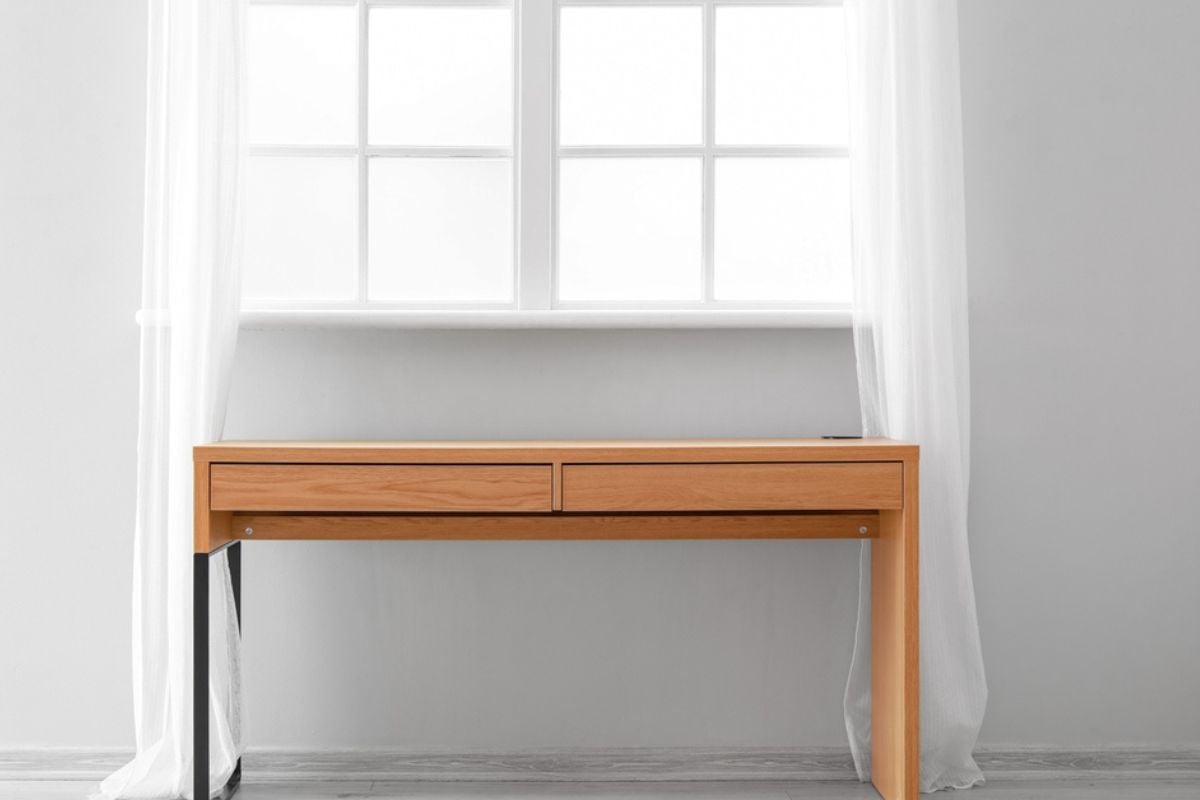
Uncovered glass leads to glare on screens and a fishbowl feeling during calls. Buyers imagine juggling awkward angles and eye strain every afternoon. Treatments also control temperature and add acoustic softness, making work hours easier. Choose light-filtering shades or layered drapery that balance daylight, privacy, and polish.
9. No Natural Light or Glare Control
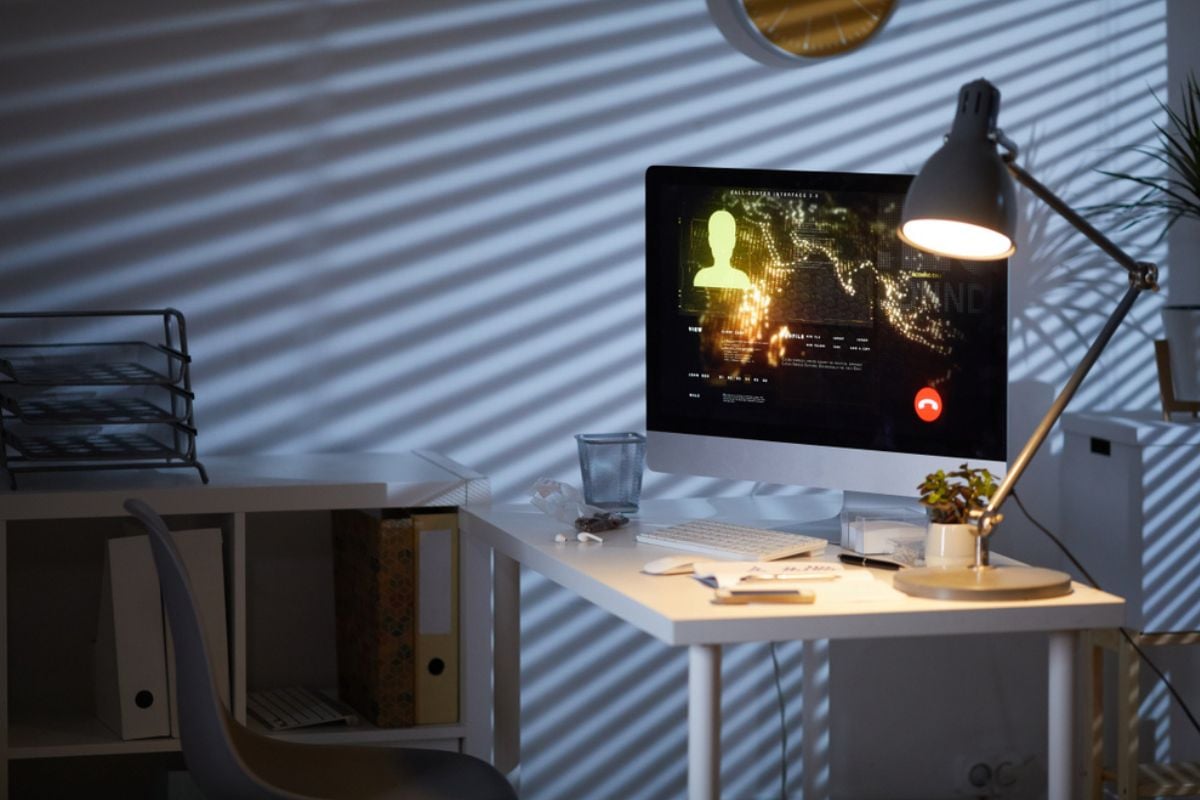
Working in a cave drains energy, but unmanaged sun blasts are just as bad. Buyers want balanced daylight that flatters faces on camera and reduces eye fatigue. The fix is angle plus control: position the desk perpendicular to windows and add shades. A dimmable task lamp completes the equation when clouds roll in.
8. Harsh, Mismatched Fluorescent Color Temperatures

Mixing blue-white tubes with warm bulbs makes skin look sickly and spaces feel chaotic. Buyers expect cohesive, modern lighting that flatters both people and materials. High-CRI LEDs in a consistent 3000–3500K range create calm, accurate color. Layer ambient, task, and accent light so the office works from sunrise to late emails.
7. Flat Lighting Without Layers or Dimmers

One overhead light creates shadows, glare, and headaches—hardly a productivity vibe. Buyers want a lighting plan that adapts to focus work, calls, and reading. Add a ceiling source for overall brightness, a desk lamp for task work, and a wall wash for depth. Dimmers let the room shift gears instantly, which feels premium and practical.
6. Tiny Closet Office, No Ventilation
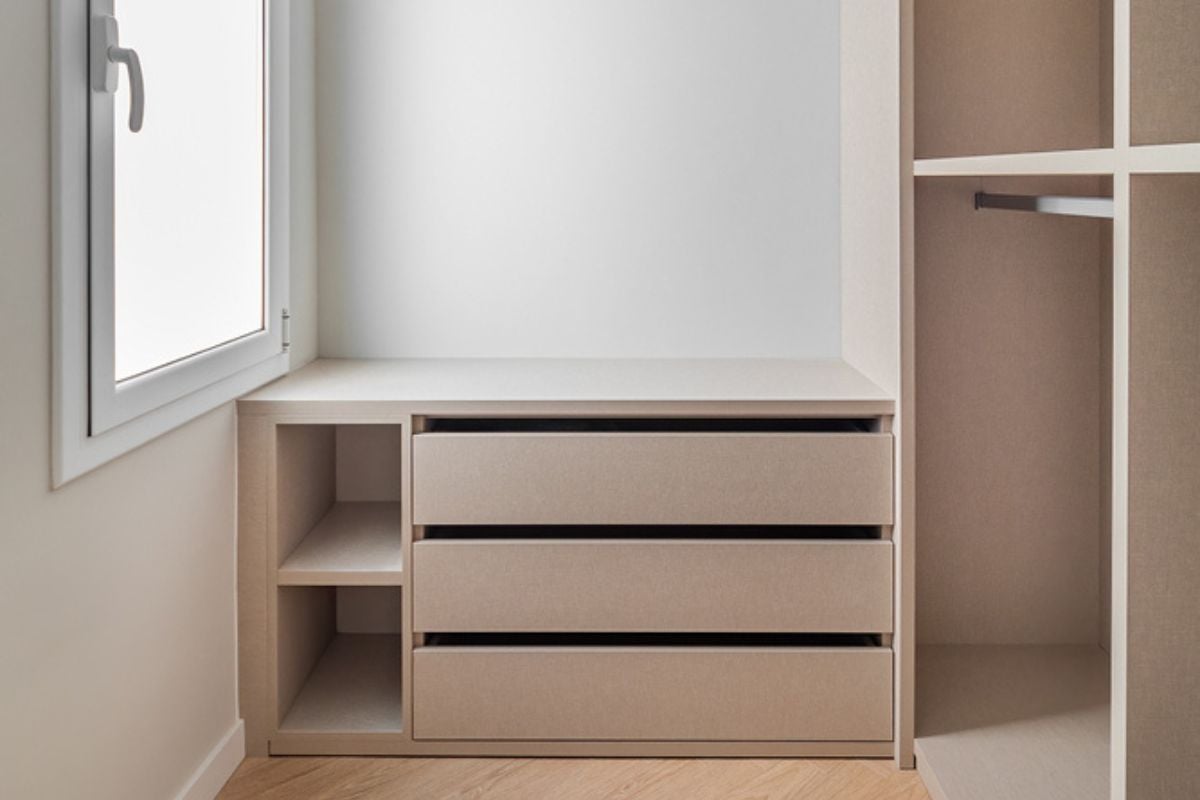
“Cloffices” look cute online but get stuffy and loud fast. Buyers imagine stale air, fan noise, and zero elbow room. Without ventilation and task lighting, the setup screams short-term hack. If a closet must work, add a quiet vent, under-shelf LEDs, and a pocket door so it breathes and functions.
5. Walk-Through Hallway Office Distraction Zone
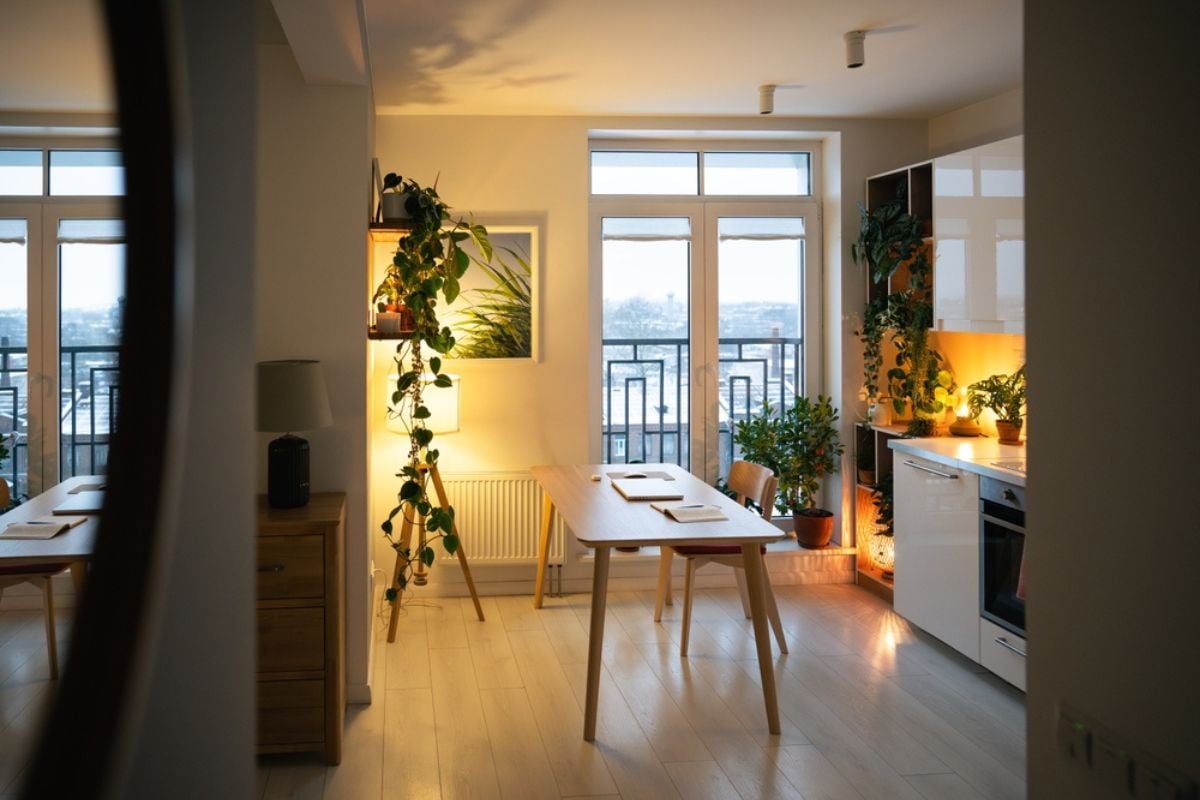
Traffic equals interruptions, which equals a space no one will use for real work. Buyers picture kids, pets, and deliveries slicing through calls. A workstation parked in circulation also violates basic ergonomics and storage logic. Relocate to a room with a door or use a nook that can be closed off to restore focus.
4. Office Consumes the Best Bedroom
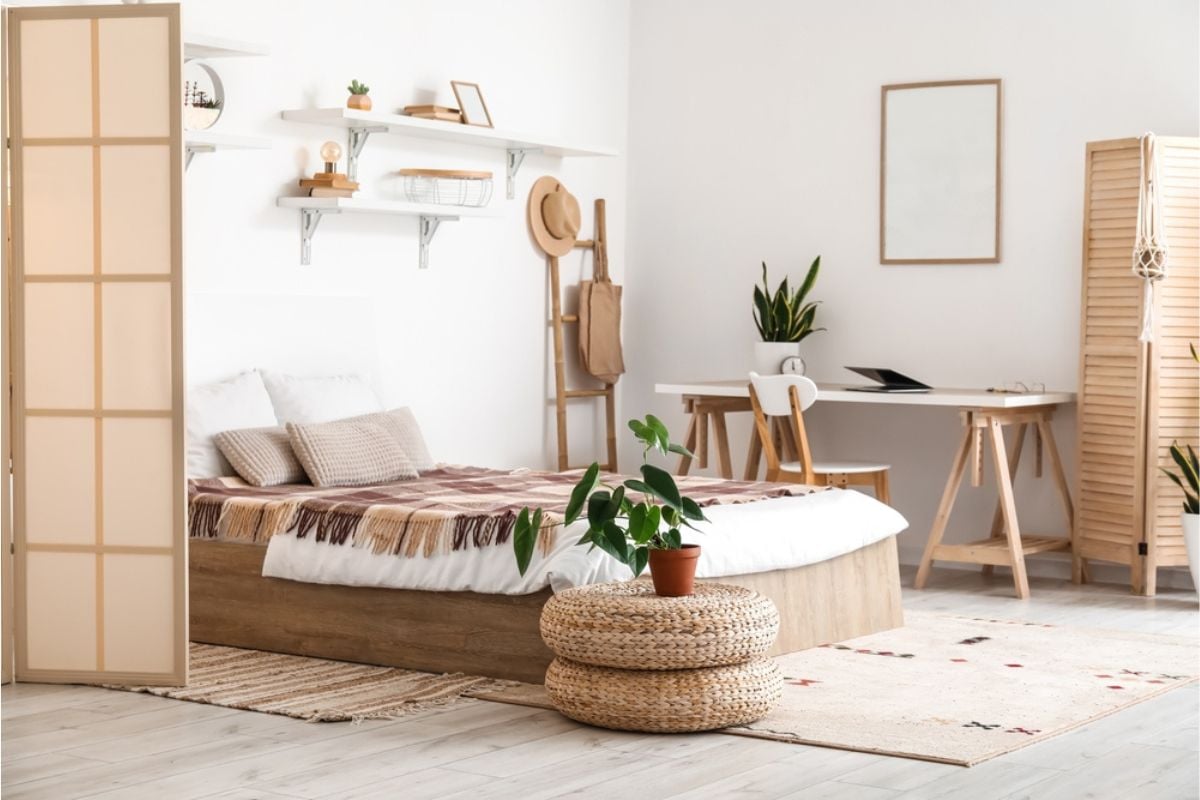
Turning your brightest, largest bedroom into an office feels like a downgrade to most buyers. They count bedrooms, and this one went missing. It also telegraphs that the rest of the home lacks suitable workspace. If you must stage it as an office, show an easy path back to a bedroom with minimal effort.
3. Converted Bedroom Without a Closet
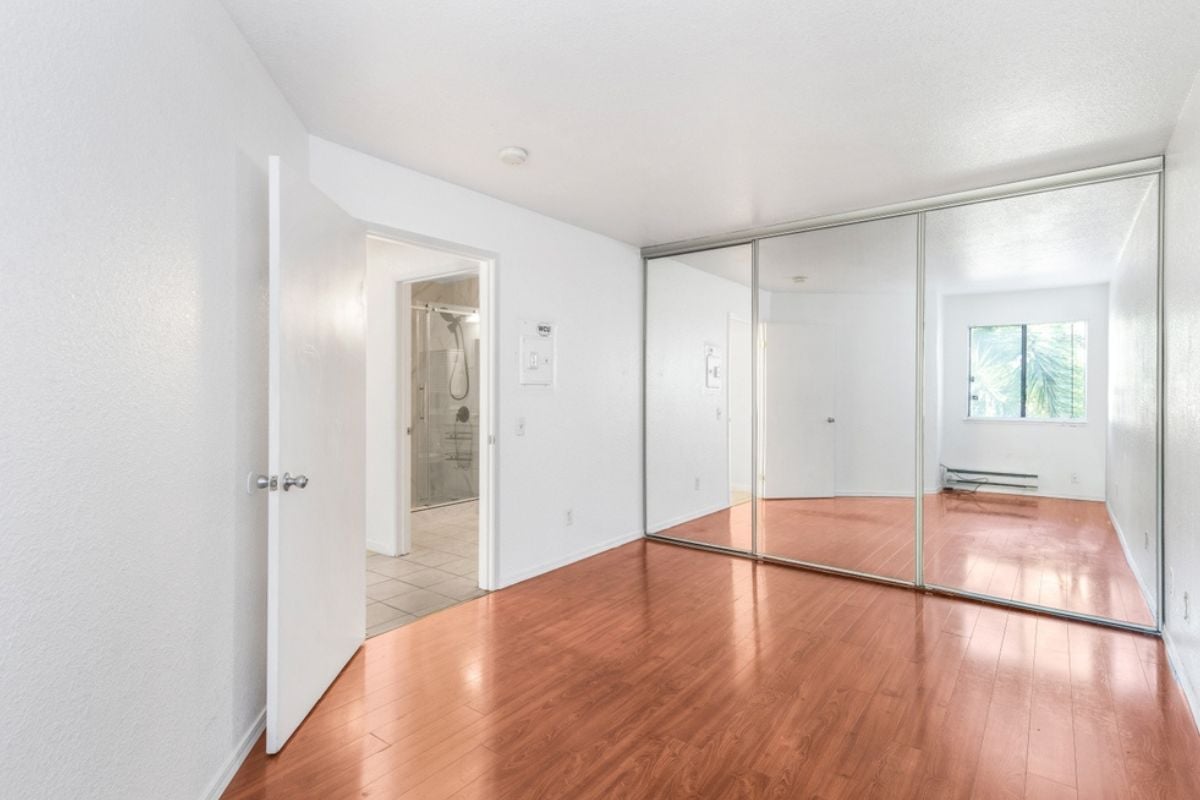
A bedroom without a closet often stops qualifying as a bedroom in buyers’ minds—and sometimes to appraisers. That can dent value and search filters in one blow. Removing storage also leaves nowhere for office essentials to live. Rebuild a shallow closet or add a well-designed wardrobe system to restore flexibility and function.
2. Unpermitted Garage or Attic Office
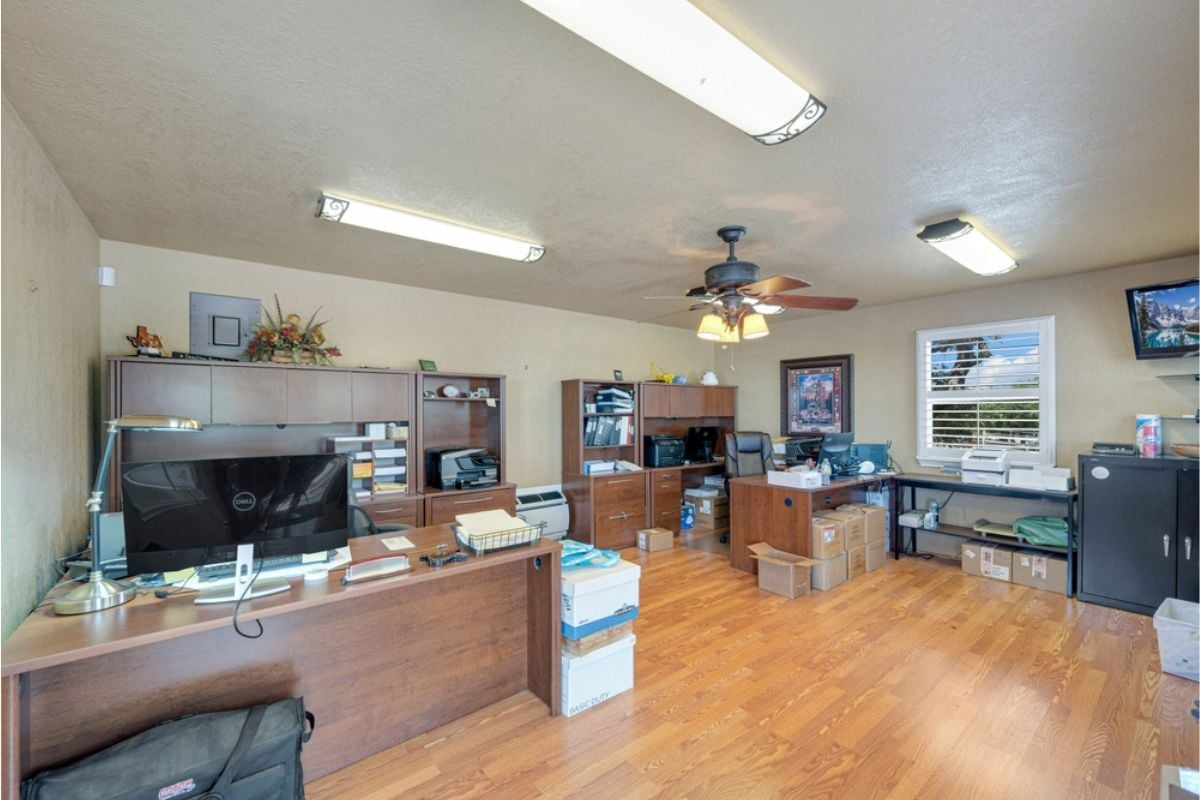
Unpermitted spaces make buyers nervous about safety, insurance, and resale. They imagine hidden electrical, insulation, and egress issues they’ll inherit. Permits aren’t just paperwork; they’re proof a space was built to code. Either legalize with permits or clearly stage as storage so you’re not selling a problem.
1. No Door or Sound Isolation
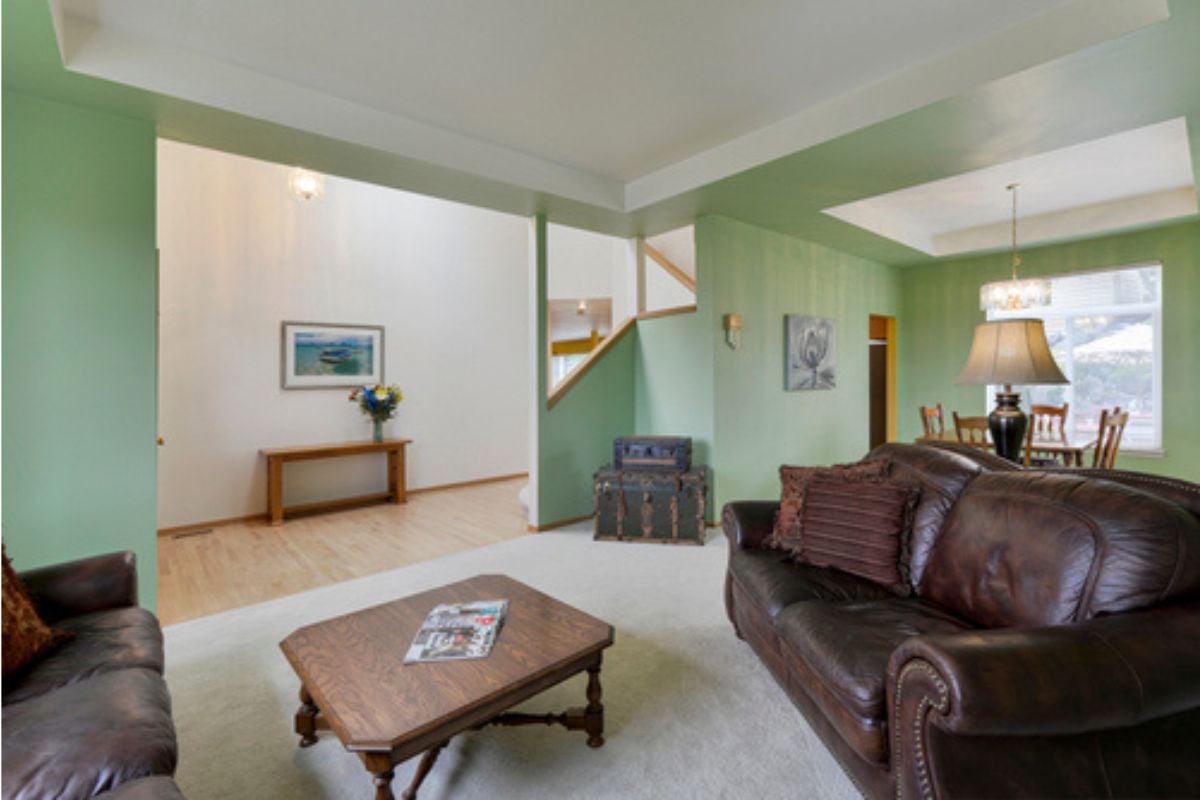
Silence is golden when you’re presenting to a client or meeting a deadline. An office that can’t close off reads as “nook,” not “room.” Buyers want a barrier to noise, smells, and distractions—that’s what makes work-from-home feasible. Add a proper door, weatherstripping, and a soft rug so focus is baked into the architecture.

